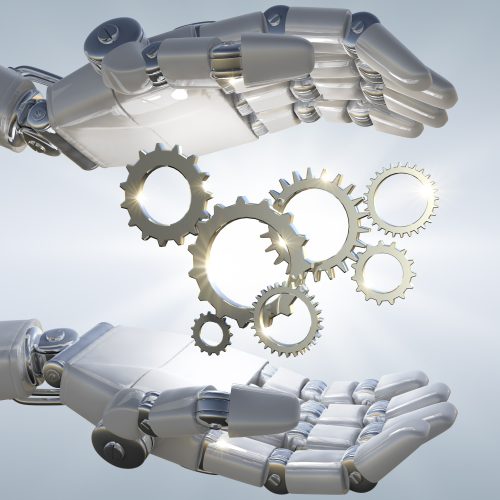Aquaponics: Integrating Tropical Fish Farming with Plant Cultivation
Aquaponics: Integrating Tropical Fish Farming with Plant Cultivation
In recent years, sustainable agriculture and food production have become central topics of global conversation. As the world faces mounting challenges such as climate change, resource scarcity, and food security, innovative farming systems are emerging that aim to maximize efficiency and minimize environmental impact. One such system that is gaining significant attention is aquaponics, which integrates the practice of tropical fish farming with plant cultivation.
Aquaponics is a closed-loop system where fish and plants work together symbiotically, providing a sustainable and efficient method of food production. This innovative farming technique combines the benefits of aquaculture (fish farming) with hydroponics (soil-free plant cultivation), creating a mutually beneficial environment where fish waste nourishes plants, and plants help filter and purify the water for the fish. In this comprehensive article, we will explore the concept of aquaponics, how it works, its benefits, challenges, and how integrating tropical fish farming with plant cultivation can lead to a profitable and environmentally friendly farming model.
What is Aquaponics?
Aquaponics is a form of integrated farming that combines two established agricultural practices: aquaculture (raising fish) and hydroponics (growing plants without soil). The system operates as a closed-loop, where fish waste serves as a natural fertilizer for the plants, and the plants help filter and clean the water for the fish.
In a typical aquaponics system, fish are raised in tanks, and the water containing fish waste is pumped to plant beds, where the plants absorb the nutrients. The water is then filtered by the plants, cleaned, and returned to the fish tanks. This process eliminates the need for chemical fertilizers, pesticides, and herbicides, making it a highly sustainable way to produce both fish and plants.
Aquaponics systems can be used to grow a wide variety of plants, including leafy greens, herbs, fruits, and vegetables, while raising fish species such as tilapia, catfish, trout, and, of course, tropical fish. The integration of these two components in an aquaponics system not only provides a consistent and renewable source of food but also minimizes resource consumption and reduces waste.
How Aquaponics Works
The success of an aquaponics system hinges on a balanced and efficient flow of nutrients, water, and waste. Here’s a breakdown of how the system works:
- The Role of Fish
Fish are at the heart of the aquaponics system. Fish, such as tropical species like tilapia or guppies, produce waste in the form of ammonia (NH3), which is a byproduct of respiration and excretion. While ammonia is toxic to fish in high concentrations, it contains valuable nutrients that plants can use for growth, such as nitrogen in the form of nitrates.
- Fish Tank: The first component of the system is the fish tank, where the fish live and grow. The tank needs to be maintained at optimal water quality and temperature to ensure the health of the fish. For tropical fish, water temperatures typically range from 75°F to 82°F (24°C to 28°C).
- Fish Waste: As fish produce waste, ammonia builds up in the tank, which can harm the fish if not properly filtered. This is where the second part of the system comes in.
- The Role of Plants
Plants are the second critical component of the aquaponics system. They absorb the nutrients in the fish waste to fuel their growth. In doing so, the plants filter and purify the water, removing harmful substances such as ammonia, nitrites, and nitrates, which can accumulate to toxic levels in the fish tank.
- Growing Beds: The water from the fish tank is pumped to the plant growing beds, which can be designed in various ways. Common methods include floating raft systems, vertical towers, or media-based beds, where plants are grown in a soil-free environment.
- Plant Absorption: Plants absorb nitrogen compounds (ammonium and nitrates) from the water, using them as fertilizer. In addition, the plants also absorb other nutrients, including potassium, phosphorus, and trace minerals, to support healthy growth.
- Clean Water Returns: Once the water has passed through the plant roots and been filtered, it is returned to the fish tank, now cleaner and purer, creating a closed-loop system where water is continuously recirculated.
- The Nitrogen Cycle
At the core of an aquaponics system is the nitrogen cycle, a biological process that converts ammonia into nutrients that plants can use. Here’s a simplified explanation of the cycle:
- Ammonia Production: Fish excrete waste that contains ammonia, which is toxic to them in high concentrations.
- Ammonia Conversion to Nitrites: Beneficial bacteria called Nitrosomonas convert ammonia into nitrites (NO2-), another toxic compound.
- Nitrite Conversion to Nitrates: Other beneficial bacteria, Nitrobacter, convert nitrites into nitrates (NO3-), which are much less toxic to fish and are an essential nutrient for plants.
- Nutrient Absorption: Plants absorb the nitrates from the water and use them for growth, completing the cycle and purifying the water for the fish.
This biological filtration system helps maintain a healthy and sustainable environment for both fish and plants.
Benefits of Integrating Tropical Fish Farming with Plant Cultivation
The integration of tropical fish farming with plant cultivation through aquaponics offers numerous benefits, making it an appealing choice for sustainable farming. Let’s take a closer look at these advantages:
- Sustainability and Resource Efficiency
One of the biggest advantages of aquaponics is its ability to conserve resources. Unlike traditional farming methods, which require large amounts of water, soil, and chemical fertilizers, aquaponics uses a fraction of the water typically needed in conventional agriculture. In fact, an aquaponics system can use up to 90% less water than traditional soil-based farming because the water is recirculated in the system.
Additionally, aquaponics systems require no chemical fertilizers or pesticides. The fish waste serves as a natural, organic fertilizer for the plants, and the plants help filter and purify the water, reducing the need for harmful chemicals. This makes aquaponics a highly sustainable method of food production that minimizes environmental impact.
- Increased Crop and Fish Yield
By integrating tropical fish farming with plant cultivation, aquaponics systems allow farmers to produce both fish and crops simultaneously, maximizing the use of available space and resources. This dual production system leads to higher yields per square foot of land than traditional farming or aquaculture alone.
For example, while traditional fish farming can produce high yields of fish, the space and resources required for growing plants are separate. With aquaponics, you can produce a variety of plants, including leafy greens, herbs, and fruits, alongside the fish, offering a diverse product output. This not only improves profitability but also provides customers with a variety of fresh, sustainable food options.
- Reduced Environmental Impact
Aquaponics systems are more environmentally friendly than traditional farming and aquaculture. By eliminating the need for chemical fertilizers and reducing water consumption, aquaponics systems have a much smaller environmental footprint. Furthermore, the closed-loop design of the system reduces waste production and minimizes the risk of pollution.
Fish farms often struggle with water quality management and waste disposal, but aquaponics solves these issues by utilizing fish waste as a resource. This leads to a more sustainable and efficient use of resources, while also minimizing the environmental impact of the farming process.
- Local Food Production
Aquaponics systems can be set up anywhere, making them ideal for local food production. Urban areas, where space and arable land are limited, can particularly benefit from aquaponics as a way to grow fresh food close to where people live. This reduces the carbon footprint associated with transporting food long distances and ensures that communities have access to fresh, healthy produce year-round.
Moreover, aquaponics can be practiced in areas with poor soil quality or where traditional farming is not viable, such as arid regions or urban environments with limited space for traditional agriculture.
- Lower Operational Costs
Aquaponics systems can be more cost-effective than traditional farming methods in the long run. Although the initial setup cost for an aquaponics system may be higher, the operational costs tend to be lower. This is because the system is highly efficient in terms of water and nutrient usage. Additionally, there are fewer ongoing costs associated with fertilizers and pesticides.
Furthermore, the combination of fish farming and plant cultivation allows farmers to diversify their income streams, providing a more stable financial foundation.
Challenges of Aquaponics
While aquaponics offers many benefits, there are also challenges to consider. Some of the main challenges include:
- Initial Setup Costs
Setting up an aquaponics system requires significant upfront investment, including the cost of tanks, pumps, filtration systems, growing beds, and the fish and plants themselves. While these costs can be recouped over time, new farmers may find it difficult to cover these initial expenses.
- System Maintenance
Aquaponics systems require careful monitoring and maintenance to ensure they remain balanced and efficient. This includes regular water testing to check for pH levels, ammonia, nitrate concentrations, and temperature. Proper management of the fish and plant populations is also essential to prevent overcrowding or nutrient imbalances.
- Technical Knowledge and Expertise
Aquaponics is a complex system that requires knowledge of both aquaculture and hydroponics. Farmers must be familiar with the needs of both the fish and the plants, as well as the biological processes that govern the system. This requires both technical expertise and ongoing learning.
- Risk of Disease
As with any farming system, aquaponics is susceptible to the risks of disease. Fish can become infected with parasites or bacteria, which can spread rapidly through the system if not properly managed. Similarly, plant diseases can also affect the crops, although the closed-loop nature of the system helps mitigate some of these risks.
Conclusion
Aquaponics offers a promising and sustainable solution to food production by integrating tropical fish farming with plant cultivation. By harnessing the natural symbiotic relationship between fish and plants, aquaponics reduces resource consumption, minimizes environmental impact, and provides a diverse source of food. While the initial setup and ongoing maintenance can be challenging, the long-term benefits of aquaponics make it an attractive option for sustainable farming.
As the global demand for sustainable, local food production continues to rise, aquaponics presents an opportunity to revolutionize agriculture and aquaculture, providing a model for food security in the 21st century. For those willing to invest the time, effort, and resources, aquaponics has the potential to become a profitable, environmentally friendly farming method that benefits both people and the planet.
Previous Article
Ornamental Fish farming
April 5, 2025

























































